Have you ever eaten sushi? Or do you want to try it but you’re not sure where to start? I know that many people are interested in trying out this classic Japanese dish, but they’re wary about the taste.
I love sushi, and I think it’s a culinary experience that everyone should try at least once. If you’re asking, “What does sushi taste like? How do I eat sushi?” then you’ve come to the right place. I’m here to give a crash course on the wonderful art of eating this Asian dish, one step at a time.
Raw Sushi vs Cooked Sushi
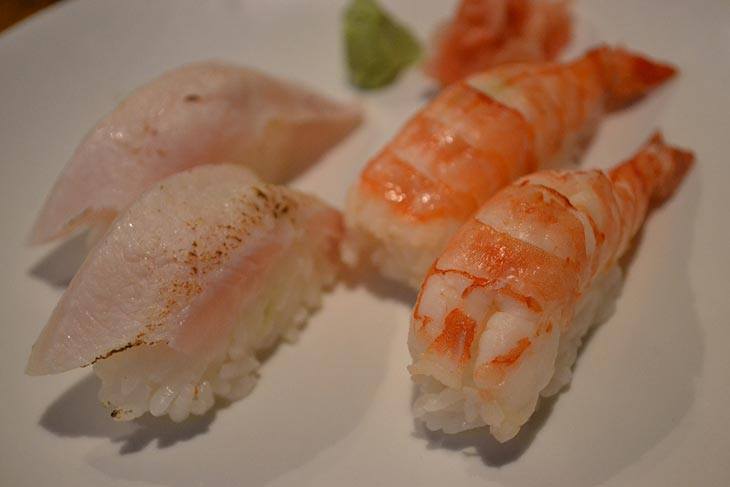
Sushi enthusiasts can eat almost any type of sushi you serve them, whether it’s tuna, squid, or even fish roe. Personally, I love salmon nigiri and the spicy salmon roll. However, beginners may feel queasy about eating raw fish or seafood.
If you’re just starting out with your sushi adventure, I recommend going for the cooked variety first. Unagi (eel) sushi is served with either a sweet or savory sauce. Ebi (shrimp) is almost always served cooked, and is actually popular to beginner and veteran sushi eaters.
I also advise you to start with something you’re familiar with. If you’re used to eating smoked salmon, then you may want to try a salmon nigiri. The color and texture will be a little different (raw salmon is more pinkish and fleshy-looking), but the taste isn’t so far off from each other.
The Importance of Rice
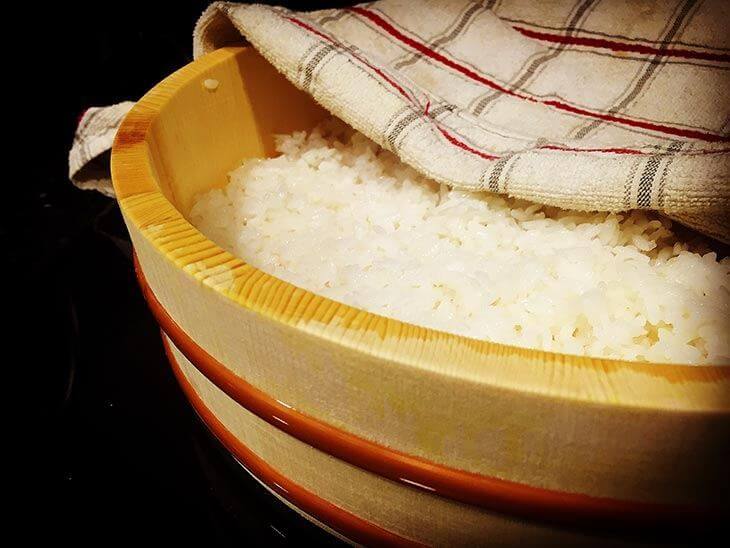
Some people say that the fish should be the star of the sushi. However, I think the secret to a great sushi is the right balance between the rice and the fish.
To make authentic sushi rice, you need to select the right type of rice first. Most sushi chefs use premium Japanese short grain rice. I personally recommend Tamanishiki Super Premium Short Grain Rice because it cooks perfectly and tastes delicious. It’s a bit expensive, but I always pick quality over price.
Bryan Sekine of Secrets of Sushi shares an easy way of cooking sushi rice in this video:
What You Need
- 2 cups of short grain rice
- 2 cups water
- 4 cups Japanese vinegar
- 2 cups sugar
- 1 cup salt
Equipment:
- Rice cooker
- Cooking pot
- Wooden spoon
Procedure
Add the rice into your rice cooker’s metal bowl and rinse with water. Throw out the water and rinse again. Refill the bowl with 2 cups of water. Remember: You need the same amount of water for every cup of rice.
Replace the metal bowl in your cooker and set to Cook. Transfer the cooked rice into a bowl and let it cool.
To make the seasoning, pour the vinegar into a pot and bring to medium heat. Stir in the sugar and salt until they dissolve completely. Turn off the heat and let the mixture cool down to room temperature.
Once your rice and seasoning have both cooled down, you can now mix them together. Add 1 part of seasoning for every 4 parts of rice. Mix well using a wooden spoon. Let it cool.
Types of Sushi
All About Sushi Guide breaks down the different types of sushi served in a sushi bar. There are five basic types of sushi, not counting the sushi fusions that are becoming more popular these days:
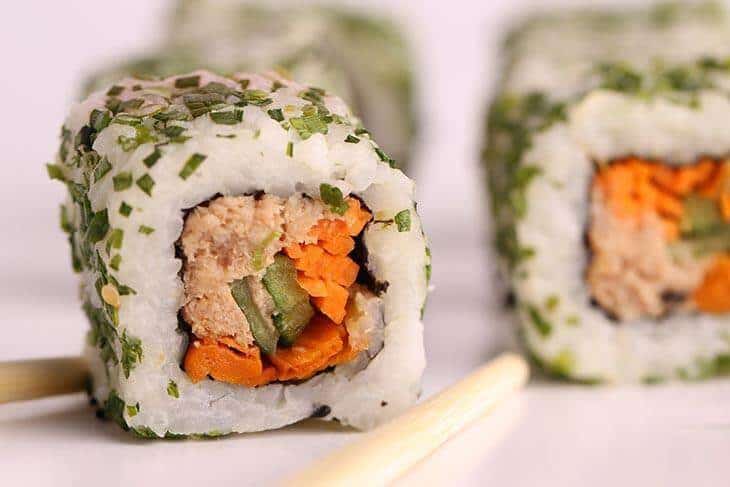
Makizushi
Maki sushi is probably the most common sushi out there. Also called rolled sushi, maki is wrapped in nori (seaweed), soy paper, or other wrapping sheets.
One of the most popular maki created outside Japan is the California roll, which is an inside-out sushi composed of cucumber, avocado or mango, and a small slice of meat crab.
If you haven’t tried sushi before, I recommend starting with maki because the seaweed helps balance the taste of the fish. You can also go for maki with cooked meat so you don’t start off with raw fish or seafood.
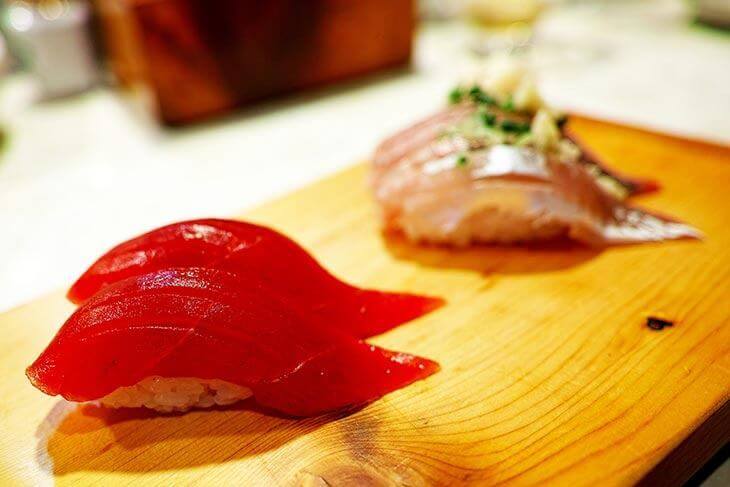
Nigirizushi
Nigiri sushi, or hand-pressed sushi, is arguably the most popular type of sushi served in traditional Japanese restaurants.
To make this, the chef takes a small handful of rice and shapes it into a rectangle. He then swipes a small amount of wasabi on one side of the rice, and top it off with a thin slice of fish or seafood.
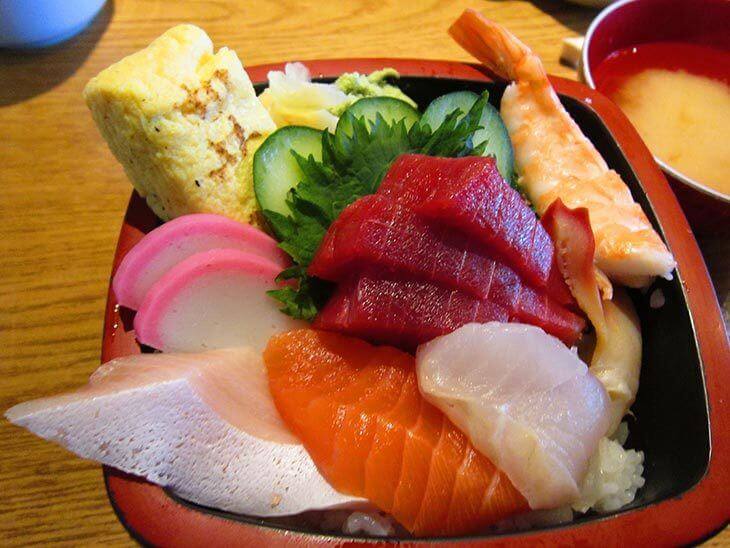
Chirashizushi
Chirashizushi is a special type of sushi served in a bowl. The bowl is filled with rice and up to nine kinds of toppings, which may include salmon, tuna, squid, crab, and tamago (gilled egg).

Inarizushi
Less common than the nigiri and maki, the inari sushi is a small pouch of fried tofu filled with rice. You can add other ingredients into the mix, like carrots, mushrooms, and even sesame seeds.
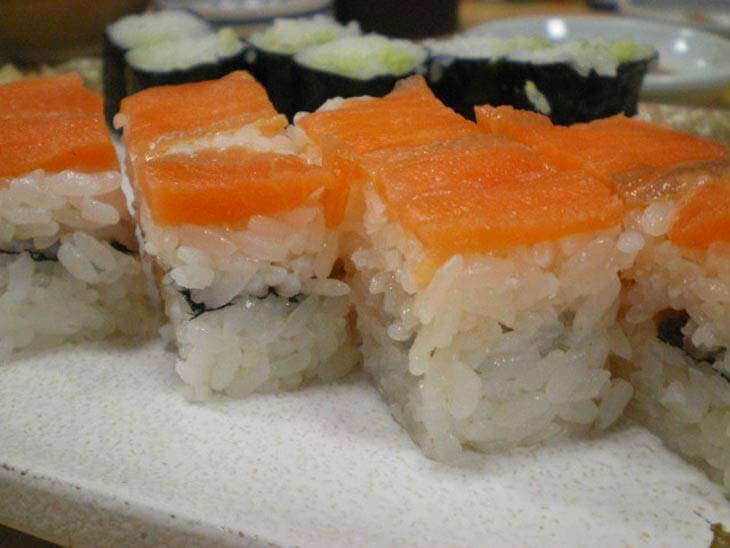
Oshizushi
Oshi sushi is also called box sushi because of its symmetrical shape. Sushi chefs use an oshibako, a type of wooden mold, to press the ingredients tightly together before cutting the sushi into bite-size pieces.
Eating Sushi the Right Way
There are many tutorial videos that teach the proper way of eating sushi. One of my favorites is the video by Savor Japan, which features sushi chef Toshikatsu Aoki. Although Chef Aoki speaks in Japanese, English subtitles are available so you can understand everything he says.
What I love most about the video is Chef Aoki’s simple way of explaining how to eat a nigiri sushi by chopstick and by hand.
To eat it by chopsticks, hold the sushi between the chopsticks and turn it over to its side. Lift the sushi with the chopsticks, dip a small part of the fish (not the rice!) in the soy sauce, and eat it in one bite.
To eat it by hand, hold the sushi between your thumb and your index and middle fingers. Flip it over to its side, lift and dip into the soy sauce, and enjoy.
Another good tutorial video is made by Scoff. It gives a step-by-step procedure on how to eat sushi, including when to drink sake, how to get sushi from the serving dish, and when to eat the pickled ginger. Watch the video here:
Conclusion
Eating sushi can be a great experience. Just choose the type you feel comfortable eating, and let the chef know what you want to eat.
If you plan to make homemade sushi, remember to follow the steps in the sushi rice making tutorial. If you want to eat in a sushi bar, don’t forget Chef Aoki’s tips. This will impress your host, and make you look like a sushi expert in no time.
Is this article helpful? I’d love to hear your comments. Also, please take the time to share this article with your friends and get more tips here. Enjoy your sushi experience!


























